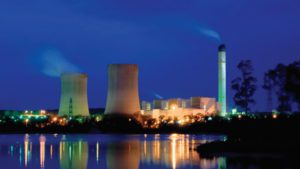New investment in solar energy technologies jumped by more than a third in 2011 to $US136 billion, and was nearly twice the total invested in wind energy investment, according to data released by Bloomberg New Energy Finance.
Bloomberg found that during a year where total new investment in clean energy increased 5 per cent to a record $US260 billion – solar energy accounted for more than half of the spend while wind fell 17 per cent to $US75 billion.
It is not the first time that solar has outstripped investment in wind, but it is the first time there has been such a gap, and came despite changes in subsidies, slumping margins and several bankruptcies.
“The performance of solar is even more remarkable when you consider that the price of photovoltaic modules fell by close to 50% during 2011, and now stands 75% lower than three years ago, in mid-2008,” said Michael Liebreich, chief executive of Bloomberg New Energy Finance. “The cost of PV technology has fallen, but the volume of PV sold has increased by a much greater factor as it approached competitiveness with other sources of power.”
The finance of distributed renewable power technology, notably rooftop PV, reached $US73.8 billion in 2011, up from $US60.4 billion in 2010 – with Italy and Germany the two countries playing the biggest role as sharply falling solar panel prices increased the returns offered by feed-in tariffs. The largest single type of investment was the asset finance of utility-scale renewable energy projects, which increased from $US138.3 billion in 2010, to $US145.6 billion in 2011.
Among country specific results, the US regained the lead in clean energy investment, jumping 33 per cent to $US55.9 billion, compared to a mere one per cent rise to $US47 billion in China, as developers rushed to take advantage of expiring federal incentives. Clean energy investment in Europe rose 3 per cent to $US100 billion, despite its economic woes, mostly in large scale and distributed solar, and offshore wind, while India lifted investment 52 per cent to $US10.3 billion, and Brazil grew 15 per cent to $US18.2 billion.
The third-largest sector for investment in 2011 after solar and wind was energy-smart technologies, including smart grid, power storage, efficiency and advanced transport, which came in at $US19.2 billion, mostly in corporate R&D and venture capital and private equity raisings. Biofuels saw total investment edge up from $US8.6 billion to $US9 billion, biomass and waste-to-energy suffered an 18 per cent setback to $10.8 billion, geothermal slipped from $US3.2 billion to $US2.8 billion, marine marked time at $US0.3 billion, and small hydro fell 25 per cent to $3 billion.
“Overall, 2011 was a far better year for the clean energy industry than the press coverage would lead one to believe,” Liebrich said. “Remember that for every equipment company operating at thin or negative margins, there is an installer who is getting a good deal. 2012 looks like being another challenging year, with the European financial crisis continuing to fester, and the supply chain working its way out of some fearsome over-capacity.
“But rumours of the death of clean energy have been greatly exaggerated. We will be seeing a new generation of technology starting to hit the market, and we are expecting important announcements by some of the biggest energy and engineering companies in the world as they take advantage of current market conditions to establish themselves in the sector.”









